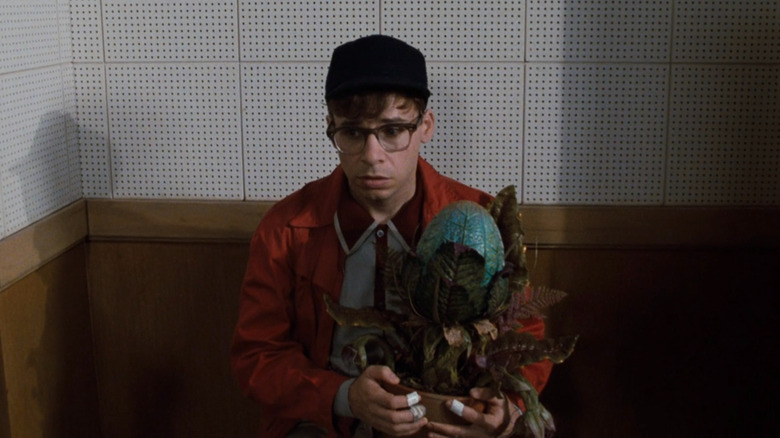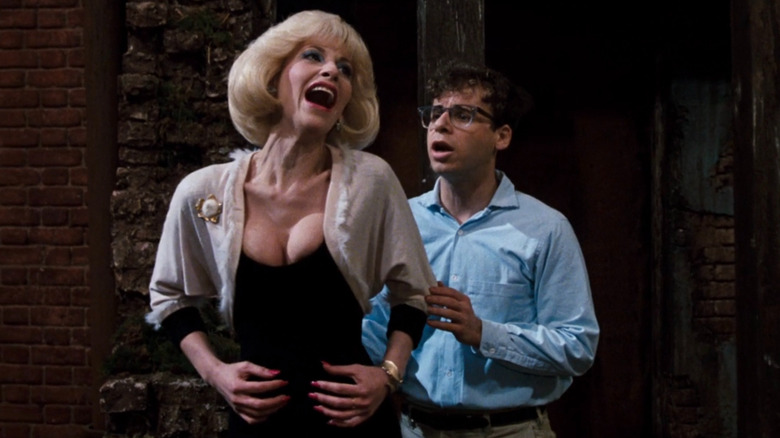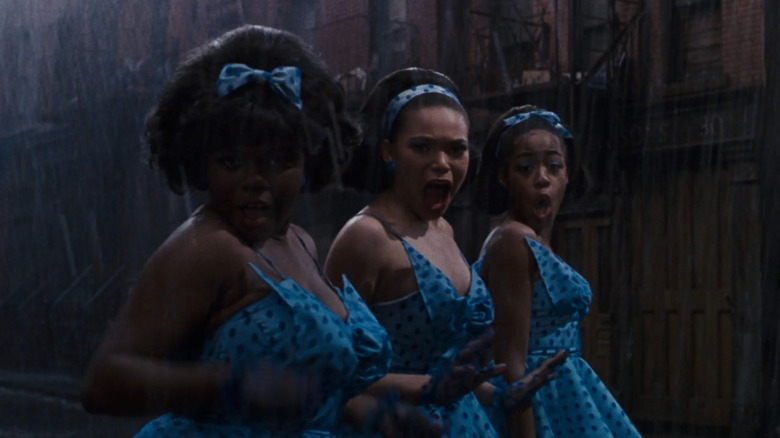Frank Oz Just 'Didn't Get' The Pitch For Little Shop Of Horrors
Frank Oz does not get nearly enough respect as a director. For a couple of decades, Oz put out a consistent run of off-beat, inventive comedies, and as is often the case with filmmakers mostly looking for humor, his work is taken for granted. But when you come out of the school of Jim Henson and The Muppets, nothing about what you do is ordinary, and no film demonstrates that better than his 1986 adaptation of the phenomenal off-Broadway musical "Little Shop of Horrors."
Oz turned this little show that played in the tiny, 299-seat Orpheum Theatre in the East Village into a grand spectacle that used the same sound stages at Pinewood Studios as the James Bond movies. He figured out how to have this massive, fully articulate plant puppet that sings and seamlessly put it in the same frame as Rick Moranis, who had to perform his musical numbers at half-speed in order for the puppet to work. Then there's the original ending with mass destruction that would make Roland Emmerich blush. But with all that grandiosity, the story is still the same simple, funny, and odd musical about a guy who gets in over his head to impress a girl that it always was.
With his background of puppetry and dark humor, you almost can't imagine anyone else directing a film adaptation of this show. It's too perfect of a match. Surprisingly, Oz initially turned down the offer to direct "Little Shop of Horrors" when it was first brought to his attention. Though his skill set was perfect, he wasn't sure how he could make it work.
A musical with 'an odd sense of reality'
"Little Shop of Horrors" is weird. That's what makes it beautiful, but that's what makes it an incredibly difficult show to put on. It's based on a 1960s B-movie by Roger Corman, features a score inspired by doowop and early rock 'n roll, and plays with theatrical and storytelling conventions constantly. Nothing about finding that right balance of camp, sincerity, satire, and horror comes easily. Frank Oz knew this. Speaking with The Hollywood Reporter a few years ago for the film's 35th anniversary, he recalls his trepidation with taking the project on:
"I said no ... I wasn't scared of it, I just couldn't get my hands around it. I didn't get it. I didn't think the script got itself away enough from the physical limitations of the theater. On top of that, it was such a huge undertaking, with 14 songs and an odd sense of reality."
So, why the change of heart? Well, after mulling the idea in his head for a while, an image popped into his head that opened up the entire movie from him. It had nothing to do with giant talking plant. No, it had to do with the film's version of a Greek chorus, in this case, a trio of women in impeccable costumes that belt their faces off. The image was them in the opening number, also called "Little Shop of Horrors," moving and singing through the rain, but not a drop of water hits them.
The key that unlocked his imagination
Conveying a world that exists outside the rules of reality can be difficult. For a film like "Little Shop of Horrors," you have several layers of artificiality that an audience must accept to go on the journey. This not only needs to be a world where a talking plant eats people but one where every character at any moment could break out into song. A lot of movie musicals cower at the notion of people singing on screen, as many attempts to capture realism on film. On stage, the suspension of disbelief is so great that you will accept basically anything.
So, why is this moment with the three women so challenging? Well, first off, films never have a Greek chorus, acting as omniscient figures that exist outside of space and time. Second, they are the first people we see and are almost entirely responsible for setting the terms of the world of "Little Shop." By having them done up to the nines and parading out on the street in a torrential downpour without getting wet, you can be thrust into a heightened world that plays by its own rules. What seemed like an impossible task to Frank Oz suddenly became incredibly clear, saying to THR, "That opened it up cinematically immediately for me, and as a result, I said yes."
Making "Little Shop of Horrors" wasn't easy for Oz, with many fights with producer David Geffen and needing to scrap the gigantic ending sequence for something more audience-friendly, but he perfectly understood how to translate this tricky material to the big screen. All these years later, that image that inspired him remains as potent as ever, and the rest of the film lives up to it.


